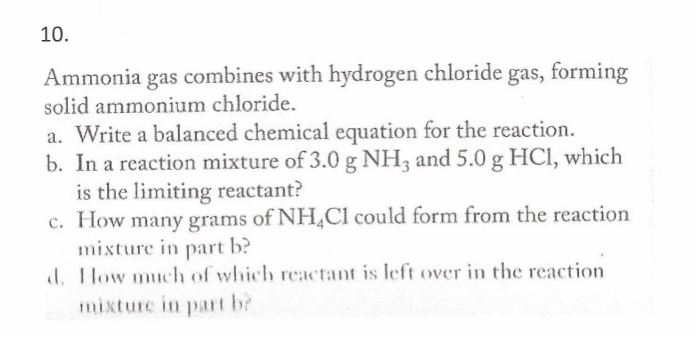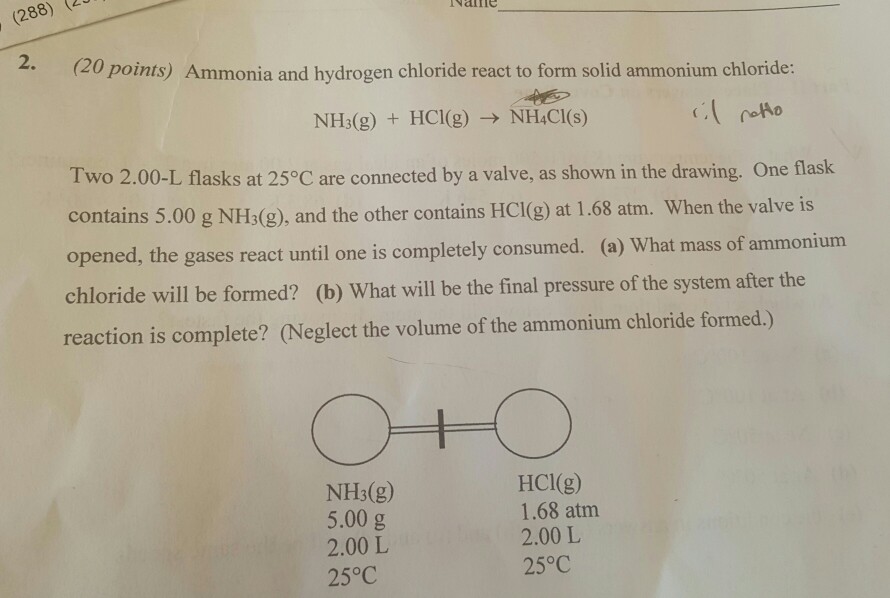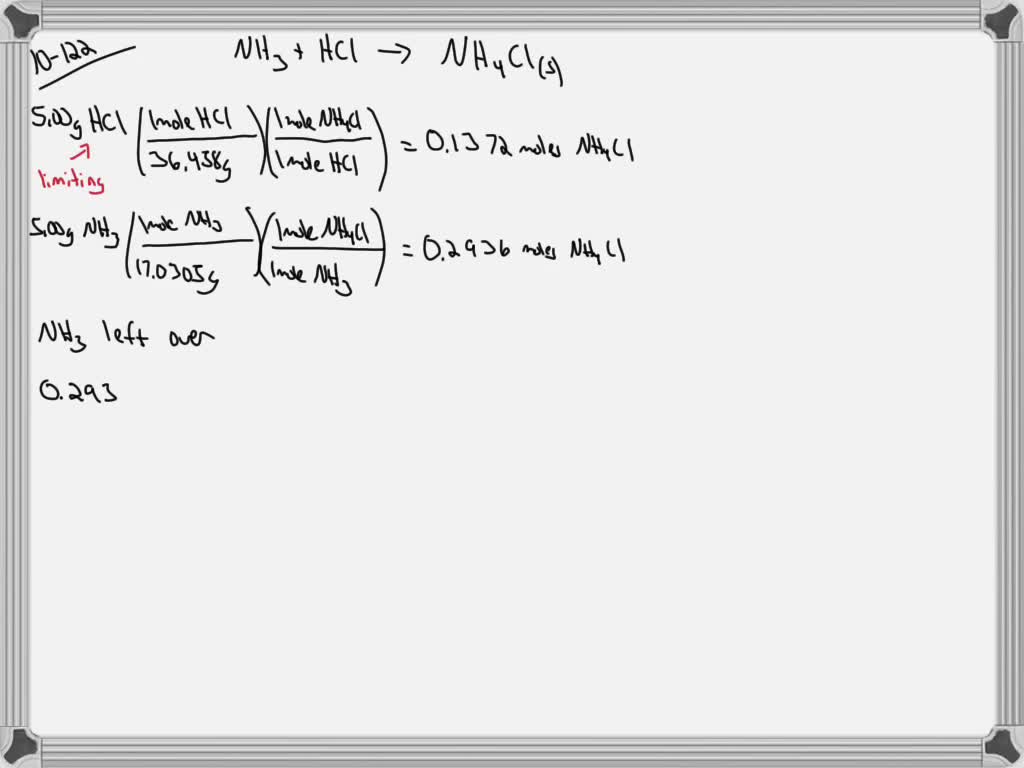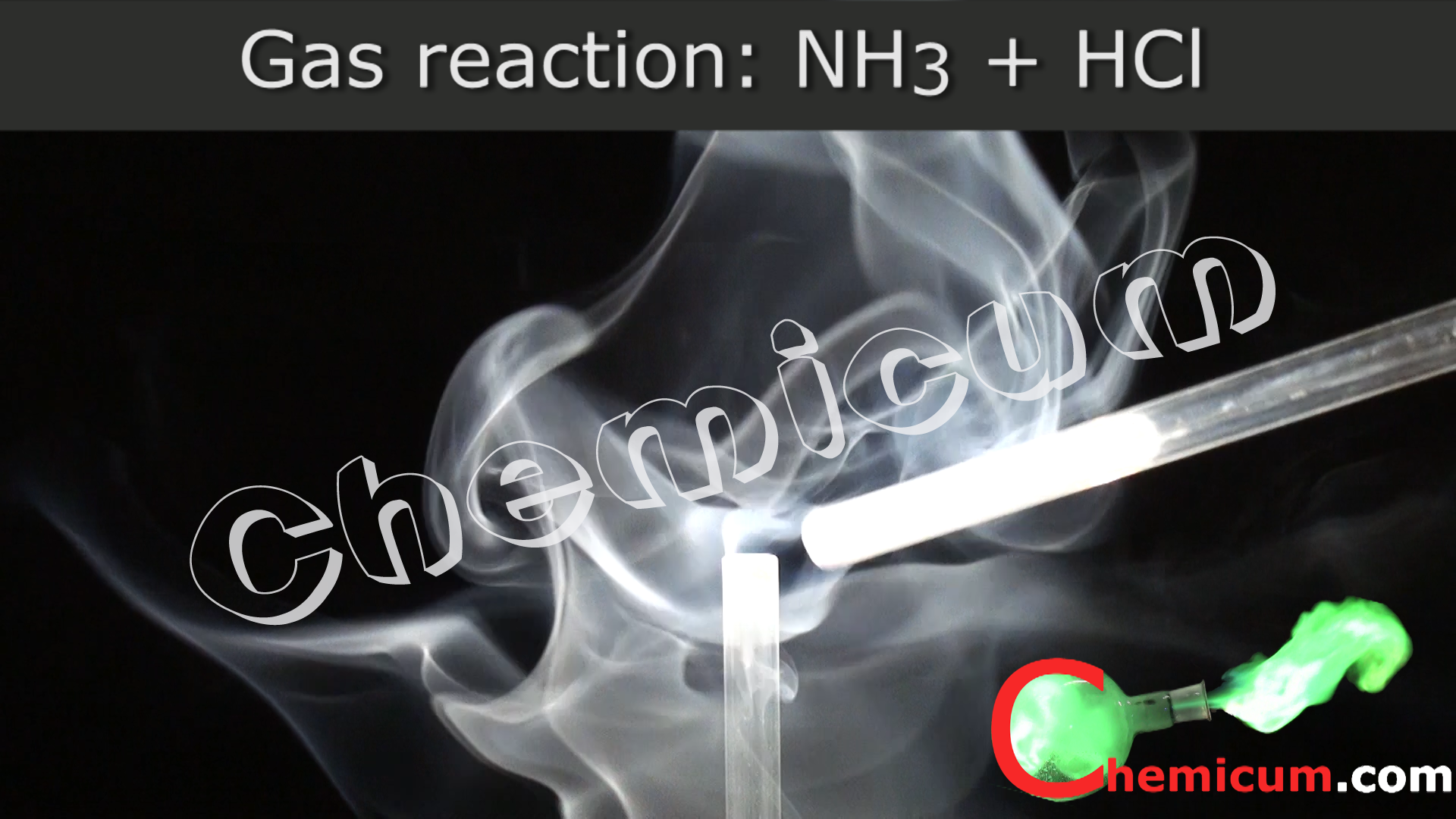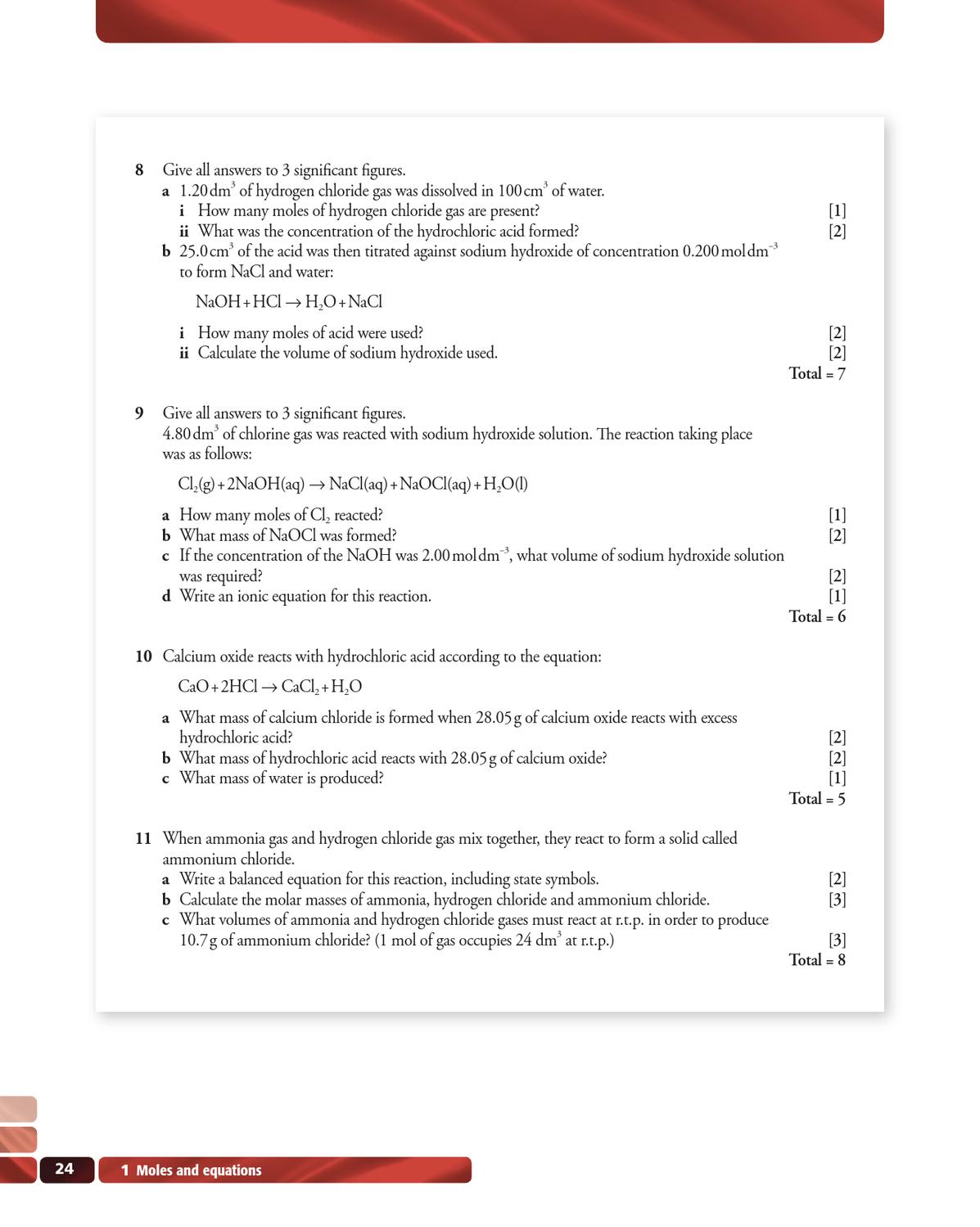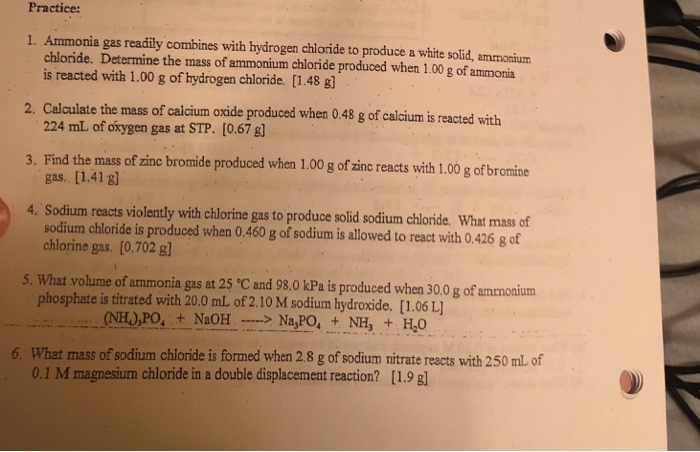Unbelievable Ammonia Gas Reacts With Hydrogen Chloride Gas To Produce Solid Ammonium Chloride

A sample of only solid ammonium chloride was heated in a 1 L container at 500 C.
Ammonia gas reacts with hydrogen chloride gas to produce solid ammonium chloride. A 100 L reaction flask contains ammonia at 0433 aim and 22degreeC and 143 mL of hydrogen chloride gas at 750 atm and 271 K is introduced. Hold concentrated hydrochloric acid next to a strong ammoniun hydroxide solution and youll get clouds of smoke because in this case its two gasses reacting to produce a solid. No water involved this time.
Thats why required amount of ammonia is high. Ammonia and gaseous hydrogen chloride combine to form ammonium chloride. What will their masses be.
The cotton wool with ammonia solution gives off. Suppose 100 g of ammonia is mixed with the same mass of hydrogen chloride. Cotton wool soaked in concentrated ammonia solution NH 3 aq and concentrated hydrogen chloride solution also called hydrochloric acid HCl aq are placed at each end of a sealed tube.
Iron 2000 g reacts with chlorine gas 2000 g. Concentrated ammonia and hydrochloric acid solutions are added to two gas-washing bottles respectively. Solid ammonium chloride is produced.
According to the a balanced reaction equation 1 mole of ammonia gas reacts with exactly 1 mole of hydrogen chloride gas to produce the solid ammonium chloride. The pressure of a container is a result of the collisions of gas molecules with the walls of the container. Which gas is the limiting reactant.
Here only chlorine atoms should be considered. When ammonia reacts with hydrogen chloride gas it produces white fumes of ammonium chloride. Produced hydrogen chloride vapor can behave as an acidic compound can release H ions in the water.

